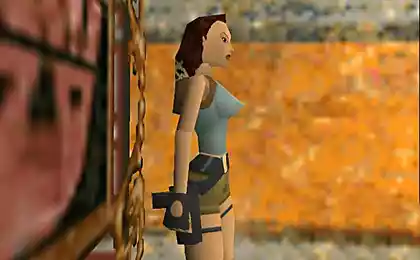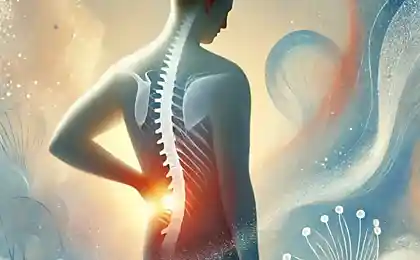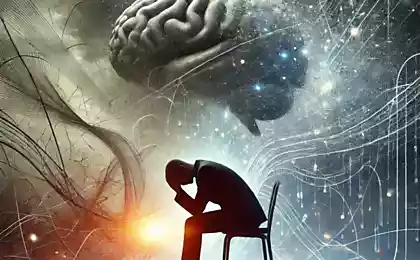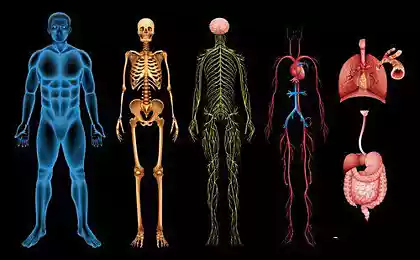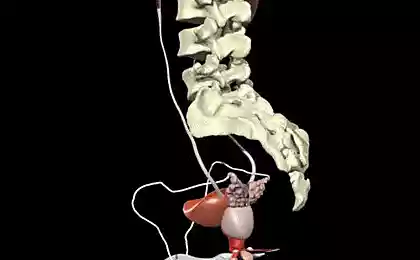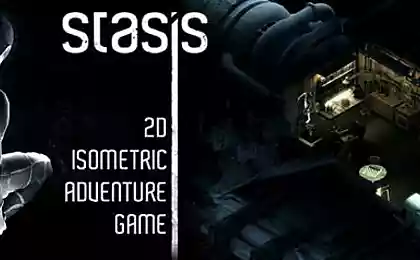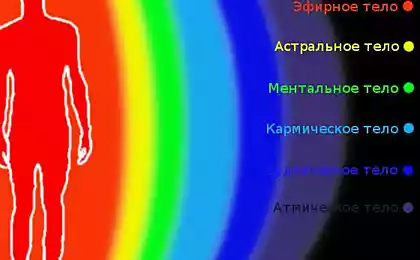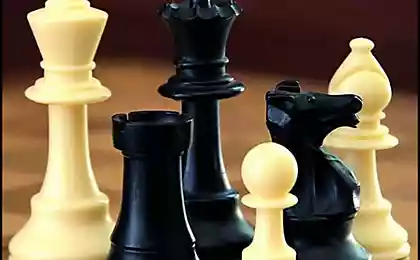490
Psychosomatic of the game: don't hide behind your own body!
A codependent relationship is a fertile ground for psychosomatic symptoms.
A bit of theory
Recognizing the diversity of functions of psychosomatic symptoms, in this article I propose to focus on only one of them is communicative. I want here to present a slightly different perspective – to look at the psychosomatic symptom as the violation of external (between me and Others) and internal (between the parts I) communication, in which the body is used as an intermediary.
Some definitions:
Psychosomatic symptom is a symptom which is caused by psychological factors, reasons, but manifested bodily (somatic) diseases of individual organs or systems.
Psychosomatic client – the person uses as a protection against stressful factors mainly your body.
Despite the fact that, based on the definition, psychosomatic symptoms have a psychological cause, and thus relieve them human, and psychological means, in our reality they are mostly doctors. I will not criticize the status quo, let me just say that this fact is not something unnatural. Usually, when a person has formed any psychosomatic disease, at this point, catfish turns out to be quite significantly affected, not to be unnoticed by the experts-physicians. It is not surprising in this situation that they are engaged in treatment of such diseases. Although, in my opinion, is hardly original in this matter, for good results requires joint work of the doctor and the psychologist.

I in his article will not be confined to psychosomatic diseases. But I will consider under a psychosomatic symptom of any somatic response caused by the impact factors of the psychological plan.
Why the game?
I propose to consider the psychosomatic symptom as a component of the game, which unconsciously involves the body.
The bodily symptom in this game acts as an intermediary between me and the real Other or between I and alienated by aspects I (not-I).
It's a psychosomatic game, in which the body loses (surrenders, sacrifices) I for some purposes.
Why I use the term "game"? Here are all the major structural components, described by E. Berne at the characteristics of psychological games.
I – not-I (the Other person to either reject the part of I) body. In the psychosomatic symptom is always present Another significant if generalized, I like Another.
When we are hiding behind your body and resort to psychosomatic?
When we lack courage to meet with Others and a others.
Consequently, we avoid direct communication and are covered her body.
Here are some of the most common uses the body for communication:
We are "renting" your body, when:
In the end, not doing anything and waiting, waiting, waiting... Hoping that something will happen to us in a miraculous way. It happens, but it's not wonderful, and sometimes deadly.
Psychosomatic customer
A good and simple solution for the psychosomatic client will deal with their projective fears and try to establish direct communication.
Typically, the recovery occurs quickly enough after able to regain a healthy aggression and learn to manage it in touch with Others and yourself... In the language of Gestalt therapy this thesis is: to Realize and accept his retroflexion (charged and drawn to himself) aggression and direct it at the object of his frustrated need.
Aggression is one of the few effective ways to defend their psychological boundaries, to protect and preserve their psychosomatic space.
But psychosomatic client is different. He is not looking for easy ways. He's too intelligent and educated for that. He chooses to communicate body language, avoiding aggression.
The symptom is always a withdrawal from contact. And if neurotically organized, the client "takes" the contact in my personal space and their feelings (and not only them) actively living in the form of an internal dialogue with the offender, psychosomatic organized client regains all symbolically, connecting body. The symptom is a monument on the grave of a contact.
"I will not confront Others with their fears, to speak directly about their needs – send me instead his body is unconscious installation psychosomatic client.
"Suffer, be silent and go away" – that was his line in problem situations interaction.
For these clients it is more important to keep your fragile world, dear your perfect image I, its illusory stability.
Psychosomatics and addiction
A codependent relationship is a good ground for the emergence of psychosomatic symptoms.
What is the essence of co-dependent relationships? In the absence of differentiation of the image I and weak boundaries. A codependent person has a vague idea of his self, his desires, and needs. In a relationship, he focuses more on the Other. In a situation of choice between I, and Others, he "chooses" as the victim's own body. However, this choice is no real choice. This automated method of contact-dependent relationships.
Why such a sacrifice, You say? To be good in the eyes of Another and his own eyes.
However, it is not always necessary to sacrifice. An adult, even dependent on Another, there's always a choice. The best of which, of course, is the psychotherapy.
With children everything is much more complicated. The child has no choice, it is difficult to Express their will, especially in a toxic hostile environment. He is totally dependent on significant others. No better case and in a situation to use the parental figures of guilt and shame. Naturally, all this is done "for his sake" and "for the love of it".
I will refer to the nice example from the film "Bury me behind a plinth".
The child shown in the family system can only survive aching. Then the adult members of the system appear to it at least some human feelings – for example, empathy. Once it begins to show adults their stand-alone installation – the system instantly reacts very aggressive. The only way for the child to survive in such a system is the rejection of self and a whole bunch of serious somatic diseases.
An adult at least remains an option for therapy, child and denied that. As in the situation of co-dependent system, the child is sent to therapy as a systemic symptom of the "get rid of the disease, without changing anything in the family system".
And for an adult to escape from a codependent family system is often very difficult, and for some people impossible.
Here is an example of an adult no less tragic manifestations of the psychosomatic as a consequence of co-dependent relationships from their own therapeutic practice.
A client of S., a woman of 40 years old, unmarried, their age has a big bouquet of diseases. In recent years, this has become a serious impediment to its work. Despite legitimate absences (medical certificate), there was a real threat of failure to conclude a further contract the number of days spent at the hospital, began to exceed working days.
The last diagnosis that prompted C. therapy was "anorexia". When I was listening to a client, I was haunted by the question: "How did it happen that this is still a young age, the woman looks sick, emaciated, old woman?" "What is this soil on which so the flourishing of all sorts of ailments?". The study of her personal history is not allowed to cling to anything serious: none of the events of her life didn't seem traumatic: the only child in the family, mom, dad, kindergarten, school, Institute, work in good firm. The only exception is the death of her father at 50 years of age 10 years ago that it was difficult to write off.
The riddle was resolved by an unexpected event: I happened to see her walking around with her mom. What they saw shocked me. Initially I even began to doubt – whether it's my client? They walked down the street like two girlfriends – holding hands.
I would even say that the mother of the client look younger – everything about her was glowing with energy and beauty! I couldn't say about my client – unfashionable clothes, a hunched back, a dull look, even the choice of paint colors for the hair and some silver-gray – it was all badly old. In the mind clearly emerged Association – Rapunzel and her mother was a witch taking away her youth, energy and beauty! Here it is the answer to all disease and poor health – malignant co-dependent relationship!
As it turned out, this kind of attitude has always existed in the life of a client, but even more aggravated after his father's death – all the power of maternal love powerful stream struck S.'s Mother and lived with her daughter's life, after her husband's death entirely focused on her. Of your daughter's life (I must say earlier it is very beautiful and slender girls showing their photos) gradually disappeared all Boyfriends, a few girlfriends: mom replaced all! The result of numerous physical ailments, as I already wrote, became anorexic. It also, of course, is of interest.
The fact that this mental disease is characterized in most cases for teenage girls, symbolizes unresolved unconscious conflict between daughter and mother in terms of separation. Psychoanalysts, studied the history of my client, I would say, probably something like: "the Daughter can not eat and digest its mother, as she is too toxic!". Despite the different theoretical views, I think most therapists would agree with the definition of such relations between mother and daughter is codependent.
What to do?
My experience with psychosomatic clients are successful, when in the course of therapy was able to convince them the authorship of their problems. While this in itself is not easy.
Here is some scheme of work with the customer, presenting either as a psychosomatic symptom:
Author: Malachuk Gennady Ivanovich
P. S. And remember, just changing your mind — together we change the world! ©
Join us in Facebook , Vkontakte, Odnoklassniki
Source: b17.ru/article/44066/
A bit of theory
Recognizing the diversity of functions of psychosomatic symptoms, in this article I propose to focus on only one of them is communicative. I want here to present a slightly different perspective – to look at the psychosomatic symptom as the violation of external (between me and Others) and internal (between the parts I) communication, in which the body is used as an intermediary.
Some definitions:
Psychosomatic symptom is a symptom which is caused by psychological factors, reasons, but manifested bodily (somatic) diseases of individual organs or systems.
Psychosomatic client – the person uses as a protection against stressful factors mainly your body.
Despite the fact that, based on the definition, psychosomatic symptoms have a psychological cause, and thus relieve them human, and psychological means, in our reality they are mostly doctors. I will not criticize the status quo, let me just say that this fact is not something unnatural. Usually, when a person has formed any psychosomatic disease, at this point, catfish turns out to be quite significantly affected, not to be unnoticed by the experts-physicians. It is not surprising in this situation that they are engaged in treatment of such diseases. Although, in my opinion, is hardly original in this matter, for good results requires joint work of the doctor and the psychologist.

I in his article will not be confined to psychosomatic diseases. But I will consider under a psychosomatic symptom of any somatic response caused by the impact factors of the psychological plan.
Why the game?
I propose to consider the psychosomatic symptom as a component of the game, which unconsciously involves the body.
The bodily symptom in this game acts as an intermediary between me and the real Other or between I and alienated by aspects I (not-I).
It's a psychosomatic game, in which the body loses (surrenders, sacrifices) I for some purposes.
Why I use the term "game"? Here are all the major structural components, described by E. Berne at the characteristics of psychological games.
- Hidden transaction level. Here, as in any psychological game, there is an explicit (conscious) and implicit (unconscious) level of communication.
- The presence of psychological win. In this way can be satisfied a number of needs: rest, attention, care, love, etc.
- The automated nature of the interaction. It is stable and stereotyped.
I – not-I (the Other person to either reject the part of I) body. In the psychosomatic symptom is always present Another significant if generalized, I like Another.
When we are hiding behind your body and resort to psychosomatic?
When we lack courage to meet with Others and a others.
Consequently, we avoid direct communication and are covered her body.
Here are some of the most common uses the body for communication:
- We are ashamed to deny the Other. Who of you will remember the situation in which You are retaining the loyalty of others, did not refer to any bodily ailment or discomfort, to deny them? This way, I must say, not causes of symptom if runs in humans, the process of feelings of guilt, of conscience – "we need to do something with his sabatauskas way"? Psychosomatic symptom occurs when person is difficult to recognize and accept the "bad" aspects of her Ya had any illness occurs "not to excuse", but really.
- We are afraid to say no to Another. The other is a real threat and the forces are unequal. For example, in cases of parent-child relationships when the child is difficult to oppose their desires adults.
We are "renting" your body, when:
- If you want peace in the family: "if Only all was quiet" – the position of Leopold;
- Do not want (afraid) to tell someone "No";
- You want (again, I'm afraid) that God forbid on us not bad thought, "I Must keep face!";
- Afraid/ashamed to ask for things for myself that others must guess themselves;
- In General, I'm afraid to change anything in your life...
In the end, not doing anything and waiting, waiting, waiting... Hoping that something will happen to us in a miraculous way. It happens, but it's not wonderful, and sometimes deadly.
Psychosomatic customer
A good and simple solution for the psychosomatic client will deal with their projective fears and try to establish direct communication.
Typically, the recovery occurs quickly enough after able to regain a healthy aggression and learn to manage it in touch with Others and yourself... In the language of Gestalt therapy this thesis is: to Realize and accept his retroflexion (charged and drawn to himself) aggression and direct it at the object of his frustrated need.
Aggression is one of the few effective ways to defend their psychological boundaries, to protect and preserve their psychosomatic space.
But psychosomatic client is different. He is not looking for easy ways. He's too intelligent and educated for that. He chooses to communicate body language, avoiding aggression.
The symptom is always a withdrawal from contact. And if neurotically organized, the client "takes" the contact in my personal space and their feelings (and not only them) actively living in the form of an internal dialogue with the offender, psychosomatic organized client regains all symbolically, connecting body. The symptom is a monument on the grave of a contact.
"I will not confront Others with their fears, to speak directly about their needs – send me instead his body is unconscious installation psychosomatic client.
"Suffer, be silent and go away" – that was his line in problem situations interaction.
For these clients it is more important to keep your fragile world, dear your perfect image I, its illusory stability.
Psychosomatics and addiction
A codependent relationship is a good ground for the emergence of psychosomatic symptoms.
What is the essence of co-dependent relationships? In the absence of differentiation of the image I and weak boundaries. A codependent person has a vague idea of his self, his desires, and needs. In a relationship, he focuses more on the Other. In a situation of choice between I, and Others, he "chooses" as the victim's own body. However, this choice is no real choice. This automated method of contact-dependent relationships.
Why such a sacrifice, You say? To be good in the eyes of Another and his own eyes.
However, it is not always necessary to sacrifice. An adult, even dependent on Another, there's always a choice. The best of which, of course, is the psychotherapy.
With children everything is much more complicated. The child has no choice, it is difficult to Express their will, especially in a toxic hostile environment. He is totally dependent on significant others. No better case and in a situation to use the parental figures of guilt and shame. Naturally, all this is done "for his sake" and "for the love of it".
I will refer to the nice example from the film "Bury me behind a plinth".
The child shown in the family system can only survive aching. Then the adult members of the system appear to it at least some human feelings – for example, empathy. Once it begins to show adults their stand-alone installation – the system instantly reacts very aggressive. The only way for the child to survive in such a system is the rejection of self and a whole bunch of serious somatic diseases.
An adult at least remains an option for therapy, child and denied that. As in the situation of co-dependent system, the child is sent to therapy as a systemic symptom of the "get rid of the disease, without changing anything in the family system".
And for an adult to escape from a codependent family system is often very difficult, and for some people impossible.
Here is an example of an adult no less tragic manifestations of the psychosomatic as a consequence of co-dependent relationships from their own therapeutic practice.
A client of S., a woman of 40 years old, unmarried, their age has a big bouquet of diseases. In recent years, this has become a serious impediment to its work. Despite legitimate absences (medical certificate), there was a real threat of failure to conclude a further contract the number of days spent at the hospital, began to exceed working days.
The last diagnosis that prompted C. therapy was "anorexia". When I was listening to a client, I was haunted by the question: "How did it happen that this is still a young age, the woman looks sick, emaciated, old woman?" "What is this soil on which so the flourishing of all sorts of ailments?". The study of her personal history is not allowed to cling to anything serious: none of the events of her life didn't seem traumatic: the only child in the family, mom, dad, kindergarten, school, Institute, work in good firm. The only exception is the death of her father at 50 years of age 10 years ago that it was difficult to write off.
The riddle was resolved by an unexpected event: I happened to see her walking around with her mom. What they saw shocked me. Initially I even began to doubt – whether it's my client? They walked down the street like two girlfriends – holding hands.
I would even say that the mother of the client look younger – everything about her was glowing with energy and beauty! I couldn't say about my client – unfashionable clothes, a hunched back, a dull look, even the choice of paint colors for the hair and some silver-gray – it was all badly old. In the mind clearly emerged Association – Rapunzel and her mother was a witch taking away her youth, energy and beauty! Here it is the answer to all disease and poor health – malignant co-dependent relationship!
As it turned out, this kind of attitude has always existed in the life of a client, but even more aggravated after his father's death – all the power of maternal love powerful stream struck S.'s Mother and lived with her daughter's life, after her husband's death entirely focused on her. Of your daughter's life (I must say earlier it is very beautiful and slender girls showing their photos) gradually disappeared all Boyfriends, a few girlfriends: mom replaced all! The result of numerous physical ailments, as I already wrote, became anorexic. It also, of course, is of interest.
The fact that this mental disease is characterized in most cases for teenage girls, symbolizes unresolved unconscious conflict between daughter and mother in terms of separation. Psychoanalysts, studied the history of my client, I would say, probably something like: "the Daughter can not eat and digest its mother, as she is too toxic!". Despite the different theoretical views, I think most therapists would agree with the definition of such relations between mother and daughter is codependent.
What to do?
My experience with psychosomatic clients are successful, when in the course of therapy was able to convince them the authorship of their problems. While this in itself is not easy.
Here is some scheme of work with the customer, presenting either as a psychosomatic symptom:
- First we need to realize the manipulative nature of patterns of behavior;
- Be aware of those needs being met in this symptomatic way;
- Be aware of the feelings (fear, shame, guilt), or introject that trigger manipulative behavior;
- To live these fears. What will happen if that happens?
- To try another method of contact. To explore the possibility of a dialogue between I and symptom. Here, in my opinion, the most successful are the traditional Gestalt approach techniques of empty chair.
- What You want to say symptom?
- What is silent symptom?
- What he needs?
- What he lacks?
- What warns?
- Than it helps you?
- He wants to change in Your life?
- Why does he want to change it?
Author: Malachuk Gennady Ivanovich
P. S. And remember, just changing your mind — together we change the world! ©
Join us in Facebook , Vkontakte, Odnoklassniki
Source: b17.ru/article/44066/
Magical anti-wrinkle cream will smooth the worst skin in just a week!
How to visually enlarge the room: 20 great ways!



